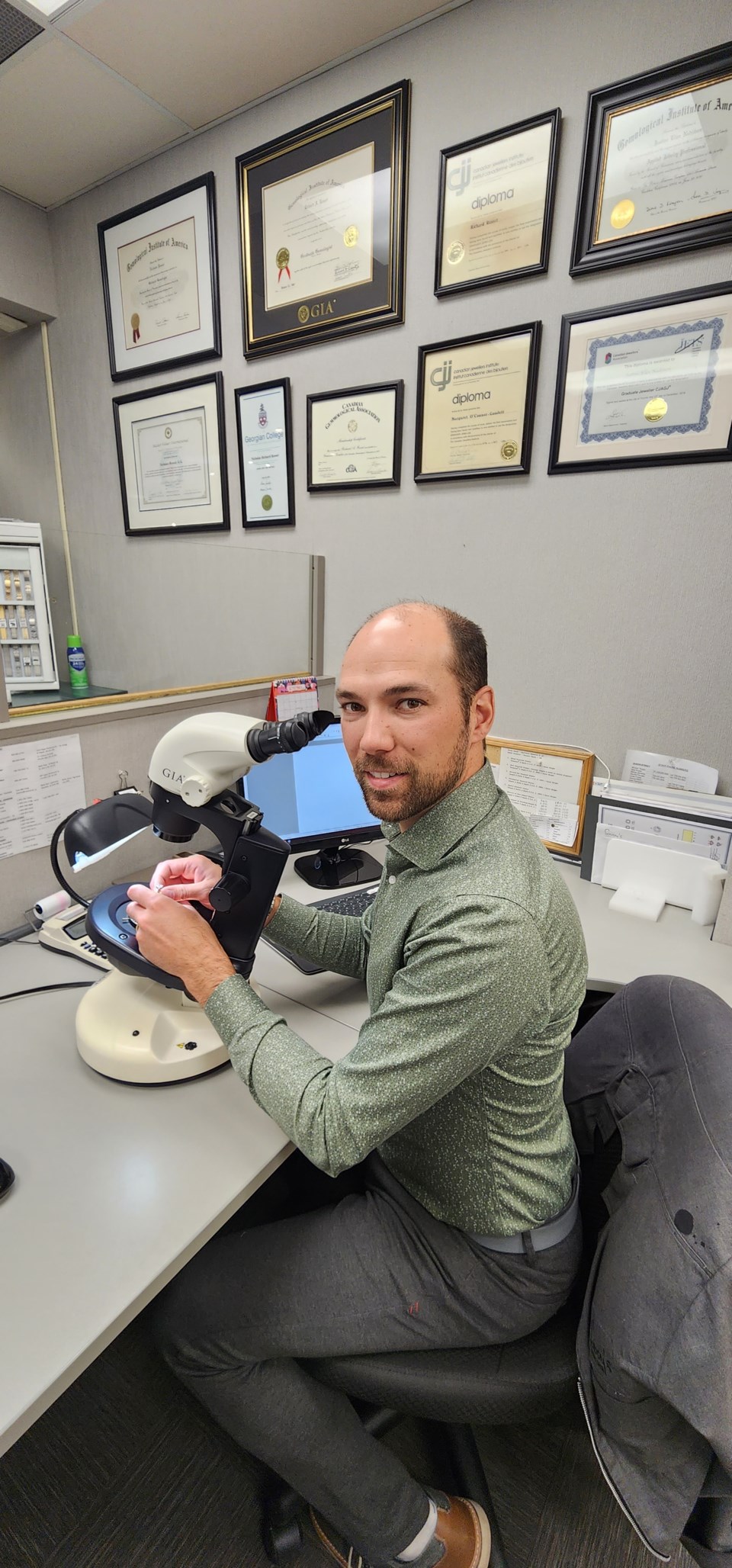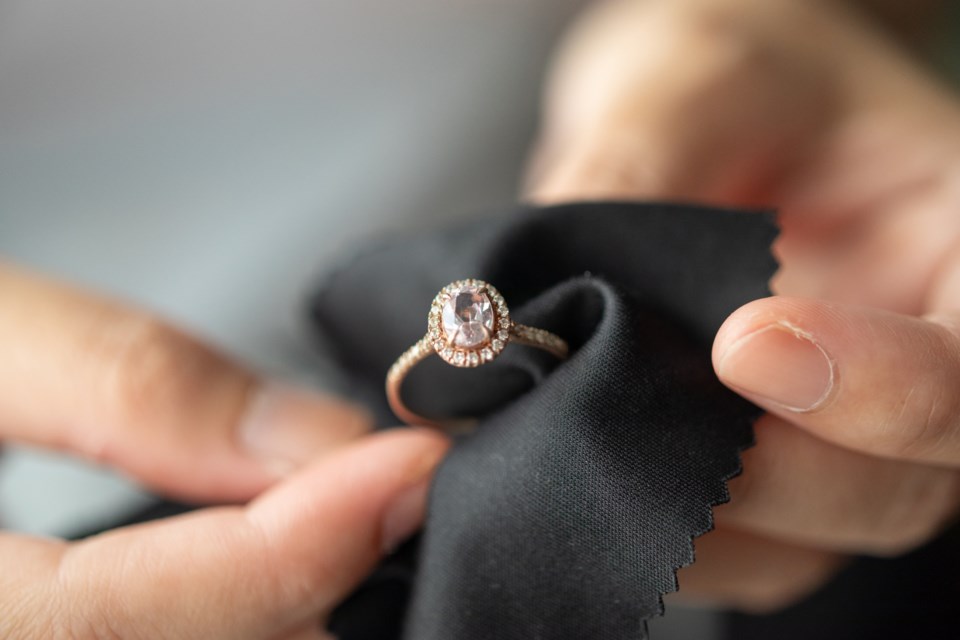When you own a piece of high quality jewellery, it should be protected. Not only will this give you peace of mind, you’ll have recourse should it ever get lost or stolen.
The experts at Savoy’s Jewellers are sharing their recommendations for keeping your cherished pieces safe. Their three-point plan includes appraisals, cleaning and care, and insurance.
Appraisals
The appraisers at Savoy’s Jewellers are gemologists, goldsmiths and registered master valuers. They approach each assessment from their respective disciplines and properly analyse each component of your piece of jewellery.
First, they begin by describing the item in precise detail: the type of item, colour, measurements, style, etc. Next they identify, describe and grade the gemstones. The item will be assigned a value based on the type of appraisal that is requested. Finally, the piece will be photographed and the document signed by the appraiser.
Pieces of heirloom jewellery or items that were gifted to you can be brought in for an appraisal too. “Often this is the most important item to appraise since the current value may be unknown to the owner. Bringing these items in for a jeweller to see will also allow us to assess the condition and identify any concerns,” says Nicholas Rosset, President, Savoy’s Jewellers. “Some jewellery or gemstones require special care; our experts can help educate the new owner.”
Of course, appraisals can vary in complexity. “Something like a plain gold chain is relatively simple compared to a pendant from another century that is set with many gemstones. For that reason, we quote based on hourly rates. Most items will range from $20-$75 each,” he says.
Certain factors can influence the value of your pieces, such as the price of gold. For that reason, insurance companies usually request an update every five years. “We also recommend a new appraisal if the purpose changes, for example from insurance value to estate planning,” says Rosset.

Cleaning and care
Knowing how to care for your pieces, and how often, is important. Jewellery should be checked and cleaned by a professional at least every six months.
“This will give us the opportunity to identify any concerns from wear and tear, as well as keeping your item sparkling like new. There is no charge, and we can often clean and check while you wait at either of our stores,” he says.
The process works as follows. Most jewellery will first undergo inspection. Provided the condition is good, the jeweller will then polish the items with a buffing wheel. The jewellery is then cleaned in an ultrasonic bath and steam cleaned, producing that coveted sparkle.
The most obvious benefit to regular cleaning is that your pieces will be shining like new again. But an inspection can also help prevent loss or damage before they occur. Preventative maintenance will save financial cost and, more importantly, emotional distress.
The best course of action is to speak to a jeweller to learn about your specific piece. Says Rosset, “Some gemstones or jewellery are sensitive to conditions such as heat or chemicals. As a general recommendation, avoid extreme conditions. Don’t wear jewellery in pools or hot tubs. Be mindful of where you keep jewellery that isn’t being worn and invest in a safe or safety deposit box. Ensure you are properly covered with insurance and consider your jewellery in your estate planning.”
Insurance
Savoy’s also spoke to Ryan Bentley, President and CEO of Northern Insurance Brokers, to learn how best to insure your items of jewellery.
“Typically, if a piece of fine jewellery—such as an engagement ring, wedding ring or watch—is purchased, it is in your best interests to contact your broker,” says Bentley. “You’ll want to discuss the possibility of insuring these valuable items and ensure that you are properly protected. The goal of the discussion is to review the pros and cons of scheduling the item, as well as provide the client with an estimated cost to insure it.
Generally, clients should consider scheduling a piece of jewellery when the value is over $1,000, when it is an heirloom item or if it holds sentimental value. It is important to discuss your options with your broker as some insurance markets offer Blanket Jewellery Coverage (also known as a Rider) which covers your jewellery up to a specified limit for multiple pieces, rather than insuring each piece individually.
Normally, when a valuable item of jewellery is purchased, the jeweller provides a certified appraisal to the buyer. That appraisal can be provided to your Insurance Broker to then schedule the item onto your insurance policy. Coverage for jewellery is typically just added onto your existing primary property insurance, such as a Homeowners, Tenant or Condo policy.
Bentley recommends reviewing your policy limits with your broker, as the numerous insurance markets may have different set limits for their standard policies. Generally, the limits vary between $6,000 and $10,000 depending on the insurance company and many times there is a limit per item of around $1,500. Having said that, it is advisable to discuss your policy limits with your broker as the various markets fluctuate with these values.
“I highly recommend clients keep a detailed inventory of their jewellery which should include descriptions of each piece, photos, videos, receipts and appraisals. It is also recommended that they keep these documents off-site if possible and store the jewellery in a safety deposit box when it is not being worn,” says Bentley. “When dealing with high valued items we recommend clients keep photos on hand of them wearing each item, as recently Claims Adjusters have been requesting photos of clients wearing their damaged or lost item.”
Wedding and engagement rings are some of the items most frequently scheduled. Highly valued heirlooms and sentimental pieces such as bracelets, watches, pendants, rare gems and antique jewellery are too. Some markets will provide lower rates to schedule a jewellery item if it is stored in a security box off-site, such as at a bank or jewellery vault.
Says Bentley, “Losing a piece of jewellery that has sentimental value can be very stressful, upsetting and emotional. Having your valuables properly scheduled onto your policy can provide you with peace of mind. Even though one of these items may become lost, you will have the certainty that you are properly protected and will receive the appropriately appraised value in your settlement.”
For appraisals and to consult with a certified jeweller, visit Savoy’s Jewellers. You can also follow them on Facebook or Instagram.
